#sámi peoples
Explore tagged Tumblr posts
Text

Trisha Romance
#trisha romance#art#reindeer#samen#sámi peoples#sámi#samis#saami#sámit#sápmelaš#yuletide#happy yule#yule
23 notes
·
View notes
Text

"For long periods of time, the Sámi lifestyle thrived because of its adaptation to the Arctic environment. Indeed, throughout the 18th century, as Norwegians of Northern Norway suffered from low fish prices and consequent depopulation, the Sámi cultural element was strengthened, since the Sámi were mostly independent of supplies from Southern Norway.
During the 19th century, the pressure of Christianization of the Sámi increased, with some Sámi adopting Laestadianism. With the introduction of seven compulsory years of school in 1889, the Sámi language and traditional way of life came increasingly under pressure from forced cultural normalization. Strong economic development of the north also ensued, giving Norwegian culture and language higher status
On the Swedish and Finnish sides, the authorities were less militant, although the Sámi language was forbidden in schools and strong economic development in the north led to weakened cultural and economic status for the Sámi. From 1913 to 1920, the Swedish race-segregation political movement created a race-based biological institute that collected research material from living people and graves. Throughout history, Swedish settlers were encouraged to move to the northern regions through incentives such as land and water rights, tax allowances, and military exemptions
The strongest pressure took place from around 1900 to 1940, when Norway invested considerable money and effort to assimilate Sámi culture. Anyone who wanted to buy or lease state lands for agriculture in Finnmark had to prove knowledge of the Norwegian language and had to register with a Norwegian name. This partly caused the dislocation of Sámi people in the 1920s, which increased the gap between local Sámi groups (something still present today) that sometimes has the character of an internal Sámi ethnic conflict. Another example of forced displacement occurred between 1919 and 1920 in Norway and Sweden. This has been the topic of a recent work of journalism by Sámi author Elin Anna Labba, translated into English in 2023 under the title The Rocks Will Echo Our Sorrow: The Forced Displacement of the Northern Sámi.
In 1913, the Norwegian parliament passed a bill on "native act land" to allocate the best and most useful lands to Norwegian settlers. Another factor was the scorched earth policy conducted by the German army, resulting in heavy war destruction in northern Finland and northern Norway in 1944–45, destroying all existing houses, or kota, and visible traces of Sámi culture. After World War II, the pressure was relaxed, though the legacy was evident into recent times, such as the 1970s law limiting the size of any house Sámi people were allowed to build
The controversy over the construction of the hydro-electric power station in Alta Municipality in 1979 brought Sámi rights onto the political agenda. In August 1986, the national anthem ("Sámi soga lávlla") and flag (Sámi flag) of the Sámi people were created. In 1989, the first Sámi parliament in Norway was elected. In 2005, the Finnmark Act was passed in the Norwegian parliament giving the Sámi parliament and the Finnmark Provincial council a joint responsibility of administering the land areas previously considered state property. These areas (96% of the provincial area), which have always been used primarily by the Sámi, now belong officially to the people of the province, whether Sámi or Norwegian, and not to the Norwegian state"
-wikipedia
2 notes
·
View notes
Text
Ædnan by Linnea Axelsson: “Crystalline prose that reads like poetry and myth at once.”
Beautiful, unique and tragic, I've never read a story quite like Ædnan and I cannot stop thinking about it.
Ædnan is a lyrical story of the Sámi people. It’s told by five generations of the same family covering a hundred years of their tragic history, their losing struggle to continue their nomadic lifestyle. In Northern Sámi, the word Ædnan means the land, the earth, and my mother. Axelsson’s family epic begins in the early spring of 1913 with Ber-Joná expressing his love for their rangeland that runs…
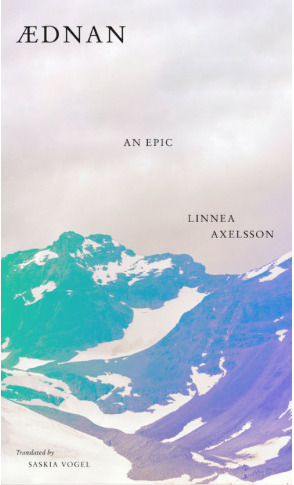
View On WordPress
0 notes
Text
@dethdvncer
I really wish arknights didn't have a character who's named for an ethnic slur of my people
13K notes
·
View notes
Text
The Sámi are being arrested for protesting.
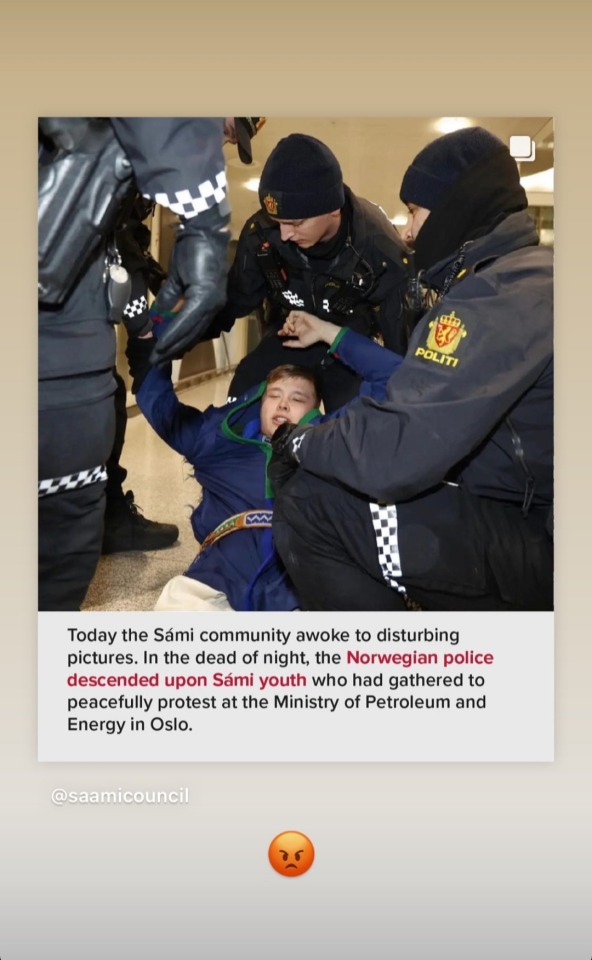
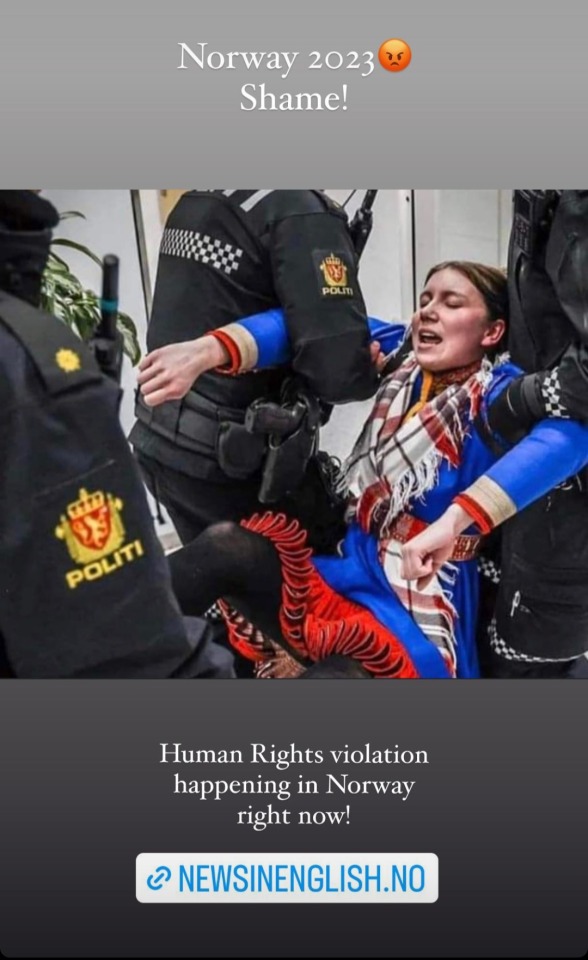

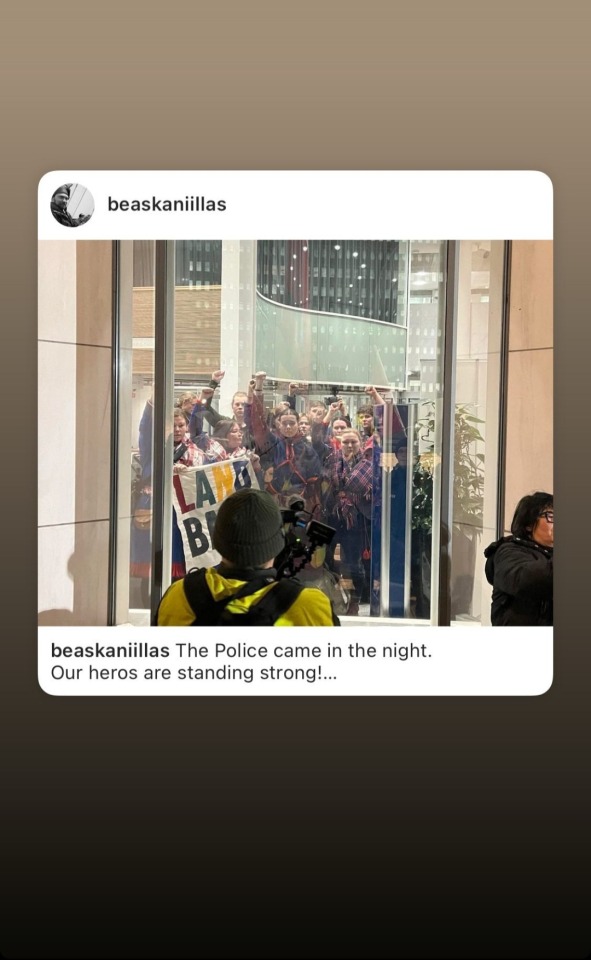
#indigenous#culture#important#fypシ#colonization#fypage#landback#Norway#Sami#saami#sámi#protest#indigenous people#indigenous rights#corruption
13K notes
·
View notes
Text
DON'T STOP
DON'T STOP CALLING YOURSELF SÀMI
DON'T STOP CALLING YOURSELF KARELIAN
DON'T STOP CALLING YOURSELF FOREST FINN
DON'T STOP CALLING YOURSELF KVEN
DON'T STOP CALLING YOURSELF INGRIAN
DON'T STOP CALLING YOURSELF SETO
DON'T STOP CALLING YOURSELF LIVONIAN
DON'T STOP CALLING YOURSELF THE NAME YOUR ANCESTORS SHOUTED WITH LOVE AND BLED FOR !!!
(One of the deadliest weapons of genocide is forced assimilation through language and self-identificstion)
#kvens norway#kven minority#kven people#finnskogen#svedjefinnar#forest finns#sámi#ingrian#Seto#Livonian#karelia#Karelian#genocide#kvens minority#kvensk#nomadic#kven#norway#nordic#sweden#finland#estonia#russia#scandinavia
83 notes
·
View notes
Text
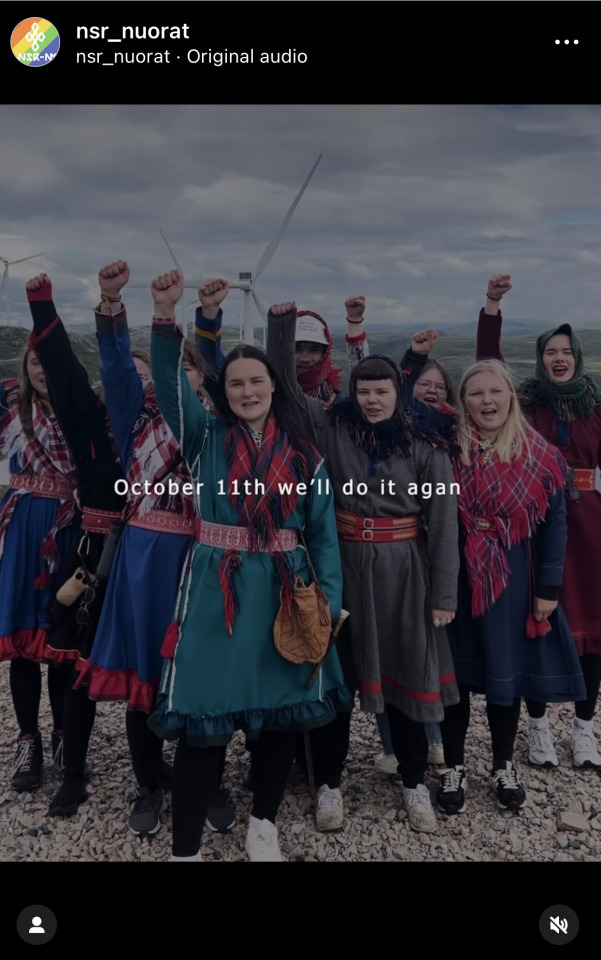
October 11, 2023 : gather at Mihkkal Hætta’s lavvu outside Norwegian parliament to protest the Fosen human rights violations in Norway.
179 notes
·
View notes
Text

Sámi people on a Norwegian vintage postcard, illustrated by Damsleth
#tarjeta#postkaart#sepia#carte postale#ansichtskarte#people#briefkaart#photo#photography#postal#postkarte#vintage#illustrated#norwegian#ephemera#postcard#historic#sámi#damsleth
23 notes
·
View notes
Text
my friend referred to a sámi party I brought them to as “the best lapp-dance she’s ever had” I was STUNNED….will be stealing that joke
43 notes
·
View notes
Text

Me when I allegedly belong to an indigenous people but in lieu of showing solidarity with other indigenous peoples I support my country's green colonialism and slander indigenous people for resisting it
#'antisemitism is having double standards for what israel is allowed to do in comparision to other countries uwu'#because famously sámi people have never resisted green colonialism that wasn't spearheaded by israel#fosen? gallok? alta? never heard of em!#triple d.txt
4 notes
·
View notes
Text
from mikjikj-mnikuk/turtle island to inuit nunangat to kanata to kalaallit nunaat to anahuac to abya yala to alkebulan to the levant to moananuiākea to sápmi to éire to bhārata to zhōngguó to nihon to aynu mosir to siberia to niugini to nusantara to bandaiyan to aotearoa, from coast to coast to coast to coast, from sea to sea to sea to sea, none of us are free until all of us — men, women, enben, children, queer people, disabled & neurodivergent people, elders, animals and the land and the sea and the sky — are free!!!!
#arcana.txt#turtle island = north america aka canada america & mexico (& the carribean & central america & greenland depending on who you ask)#inuit nunangat = the arctic aka inuit territory#anahuac = the traditional name for mexico#abya yala = south america (& the carribean & central america depending on who you ask)#alkebulan = the indigenous name for africa#levant = the place where israel & palestine are but also includes cyprus jordan lebanon & syria#moananuiākea = the hawaiian word for the pacific ocean & all the pacific islands#sápmi = the traditional land of the sámi in the northern parts of scandinavia & sweden norway finland & russia#bandaiyan = the indigenous word for australia / aotearoa = the māori word for new zealand#& the reason why i& included animals & the land sea & sky was bc that's central to indigenous activism just as much as it relates to humans#ya can't just free the humans ya gotta free the lands seas & skies too!!#btw mikjikj-mnikuk means turtle island in mi'kmawi'simk i& found it fitting to use the oldest language that yt europeans heard when arrivin#as the mi'kmaq were literally the first indigenous peoples that yt settlers spoke to & saw in 'canada' aka kanata which is the actual word+#which it originated from which came from a huron-iroquois word!!#+ zhōngguó is the chinese word for china ! i& included it bc the uighurs & tibetans & other idigenous peoples are still struggling there!!#+ nihon is the word for japan & i& added it bc we can't forget the ainu & okinawans !!#kalaallit nunaat = greenland & éire = ireland in gaeilge#niugini = new guinea in tok pisin / nusantara = indonesia & the archipelago from old javanese bc they have a lot of indigenous peoples#bhārata = india — i& added it bc there's a LOT of indigenous peoples there & the caste system often has them at the bottom#aynu mosir = ainu homelands !!#siberia also has MANY indigenous peoples living in literally the coldest parts of the world & they're going thru a lot rn#nobody's free until all of us are free!!!!#protect indigenous peoples everywhere!!!! protect each other!!!!#protect the lands seas & skies & also keep them centered in your activism while making sure human rights are valued!!#land back#activism.#psa.#** post; okay to reblog.
29 notes
·
View notes
Text
I WARNED YOU ITS SELKIE AU TIME

Here’s Craig!! Ignore that i drew him kinda young here, this was just a doodle, he’s like early 20s in this au
Anyway plenty of people know about female selkie myths: they go on land, get their skin stolen by a man, and they’re forced to marry and live with him till they either 1: die or 2: find their skin and return to the sea
but there are male selkies with a bit of a different lore >:)
male selkies follow the same rules with skins as women do: they shed their skin to become human, and without it, they can’t go home. But, according to mythology, if a heartbroken or unhappy woman cries 7 tears into the sea, she summons a selkie to fall in love with her and take her back to his underwater kingdom.
the stories range on how much of this is the woman’s free will vs. mind control, and no one seems to agree on how long a male selkie can stay on land, but this is kinda important to this au. Not the main focus, but i wanted to mention it anyway cause i found it cool.
but yeah expect more of this cause i’m brainrotting very hard atm <3
#also the ‘Sámi’ above Craig is the indigenous group that is generally responsible for the myth of selkies#they came to the Irish and Scottish isles in kayaks and animal skins (especially seals)#for some reason that made people think they were animals in disguise as people?? idk man#so most of the selkies in their human forms in this au will have clothes based on traditional Sámi/Inuit clothing#(also if im like appropriating or smth lmk but i’ve done a crap ton of research to make sure im not being ultra offensive or anything)#south park#south park au#south park fanart#cyn art#craig tucker#sp craig#craig sp#creek selkie au#<- new name tbd i’m bad at naming things
52 notes
·
View notes
Note
does una come back at some point? if she does, does she meet ava or owlva? are they still friends by then or do you not know yet?
una comes and goes because she has a place she's from and has work or college or something. friends there. dont super want to explore all that because i like keeping it focused on the one area and not big sprawling lots of characters. but she knows ava from emailing eachother and sending things back and forth. so she keeps in touch when she eventually has to go back. but she comes back to where ava is again because ava's messages are getting less and less because of basically autism burnout but in a weird surreal way. she cant look after herself anymore. una meets owlva when she goes back then and stays to help look after her with the ornithologist and [her partner].
#asks#people are lacking names a bit but oh well#the ornithologist is ava una universe equivalent to sámi#basically same as this world but i like keeping the world a bit loose and not exact places#ùnaava
14 notes
·
View notes
Note
hi i saw ur post about the ethics slur for sami people and i was just wondering, in your opinion, is it okay to keep calling lap(p)land by that name? or should it only be called sapmi? or is there an other name? (ur obviously not required to answer but i couldnt find anything conclusive online)
ive answered this about a million times on the post itself. Yes the placename makes use of the slur. Any name that uses "l*pp" when talking about Sámi land is using the slur. "L*ppland" or the variant with one p just means "place where the dirty disgusting poor L*pps live". They are describing the place by the slur they use for the people.
Our native name for our land is Sápmi. We are Sámi, we live in Sápmi.
Honestly at this point it would even be better to use the country name. If you mean northern Finland say northern Finland. If you mean Norway say Norway. Our land has been colonized by so many other nations that it truly is splintered in that way.
But if you're talking about Sámi issues and Sámi land, our ancestral grounds are Sápmi.
#Asks#Anon#I'm not even completely just annoyed at you. But I've been asked this so many times#''is the placename using the slur'' fucking use your brain. Of course it is#It literally names the slur and refers to the homeland of the people the slur is directed at#What is your confusion#Do you not know how words typically work.#What would even the situation be where the placename SOMEHOW coincidentally doesn't use the slur#Just for centuries oppressors used that placename for us complete innocently not meaning anything bad at all?#Like. Grow up#Sámi#Sápmi
4 notes
·
View notes
Text
Sámi speaking up
#indigenous#culture#important#fypシ#colonization#fypage#landback#norway#Sami#saami#sámi#indigenous people#indigenous culture#indigenous rights
5K notes
·
View notes
Text
sees youtube video about my old flame the pitted ware culture: yay!
it's described as "the last hunter-gatherers of europe": uh. no?
because you see, the last hunter-gatherers of europe were part of a culture that is still around, although they transitioned from hunter-gatherers slowly starting in the late iron age, supplementing the hunting, fishing, and foraging with some animal husbandry (something the PWC seems to have done with pigs too), and after almost a millennium as herder-hunter-gatherers they intensified the herding to the point of being primarily herders (parts of the culture at least) as a response to taxation pressure in the 17th century
you might have heard of them they're called the sámi
#people often think sámi reindeer herding is much older than it is#''at least part of the culture'' because reindeer herding became much more central to the mountain sámi than for the forest or sea sámi#archaeology
6 notes
·
View notes